An Insight into the Defects-Driven Plasticity in Ductile Cast Irons
Abstract
:1. Introduction
2. Experimental Section
Materials and Microstructure Characterization
- prismatic heavy section casting GJS400_P—two tensile specimens called C_1 and C_2 were machined off from the core of the block; two additional specimens, named S_1 and S_2, were taken from close to the external surface of the block, so materials from different cooling conditions could be tested;
- cylindrical heavy section casting GJS400_Ce—10tensile specimens were machined off from a 25 mm thick slice at about the 200 mm height of the cylindrical block, with codes ranging from Nr 11 to Nr 20;
3. Results
3.1. Microstructure
3.2. Tensile Properties
3.3. Fractography
3.4. Micro-Computer Tomography (μCT)
4. Discussion
4.1. Correlation between Tensile Behavior and Microstructure
4.2. Defects-Driven Plasticity (DDP)
4.3. Strain Hardening Considerations and a New Material Quality Index
- in sound materials, σP is higher than the saturation stresses σV of the tensile flow curves, and, as a consequence, the pivotal strain hardening rate ΘP is negative (non-real), as indicated in Figure 24b;
- in defective materials, the pivotal stress σP is between the mean YS and the saturation stresses σV, so that the strain hardening rate ΘP is positive (real), as shown in Figure 23a,b;
- as the material defectiveness increases, the mean yield strength (YS) and pivot stress (σP) become closer, causing the ratio of σP/YS to approach unity in very defective castings;
- with improving casting integrity, the ratio σP/YS increases.
5. Conclusions
- The lowest positions of the Voce parameters in the linear dataset correspond to the least defective microstructure, having also the longest elongations to rupture and the highest UTS;
- The highest positions of the Voce parameters in the linear dataset correspond to the most defective microstructure, also displaying the shortest elongations to rupture and the smallest UTS.
- 3.
- The linearity of the Voce parameters in MAD translates into the existence of a pivotal point belonging to all the experimental Voce differential curves, namely, (σP;ΘP);
- 4.
- In sound materials, σP is higher than the saturation stresses σV of the tensile flow curves, and, as a consequence, the pivotal strain hardening rate ΘP is negative (non-real);
- 5.
- In defective materials, the pivotal stress σP is between the mean YS and the saturation stresses σV, so that the strain hardening rate ΘP is positive (real);
- 6.
- As the material defectiveness increases, the mean yield strength (YS) and pivot stress (σP) become closer, causing the ratio of σP/YS to approach unity in defective castings, while with improving casting integrity, the ratio σP/YS increases well above the unity.
Author Contributions
Funding
Informed Consent Statement
Acknowledgments
Conflicts of Interest
References
- Nilsson, K.-F.; Vokál, V. Analysis of ductile cast iron tensile tests to relate ductility variation to casting defects and material microstructure. Mater. Sci. Eng. A 2009, 502, 54–63. [Google Scholar] [CrossRef]
- Källbom, R.; Hamberg, K.; Björkegren, L.E. Chunky graphite formation and influence on mechanical properties in ductile cast iron. Fatigue Fract. Eng. Mater Struct. 2009, 32, 379–390. [Google Scholar]
- Baer, W. Chunky Graphite in Ferritic Spheroidal Graphite Cast Iron: Formation, Prevention, Characterization, Impact on Properties: An Overview. Int. J. Met. 2020, 14, 454–488. [Google Scholar] [CrossRef]
- Iacoviello, F.; Di Cocco, V. Influence of the graphite elements morphology on the fatigue crack propagation mechanisms in a ferritic ductile cast iron. Eng. Fract. Mech. 2016, 167, 248–258. [Google Scholar] [CrossRef]
- Borsato, T.; Ferro, P.; Berto, F.; Carollo, C. Mechanical and Fatigue Properties of Heavy Section Solution Strengthened Ferritic Ductile Iron Castings: Mechanical and Fatigue Properties of Heavy Section. Adv. Eng. Mater. 2016, 18, 2070–2075. [Google Scholar] [CrossRef]
- Shiraki, N.; Watanabe, T.; Kanno, T. Relationship between Fatigue Limit and Defect Size in Spheroidal Graphite Cast Iron with Different Graphite Spheroidization Ratios and Microstructures. Mater. Trans. 2015, 56, 2010–2016. [Google Scholar] [CrossRef]
- Endo, M. Effects of small defects, matrix structures and loading conditions on the fatigue strength of ductile cast irons. Theor. Appl. Fract. Mech. 2014, 12, 01002. [Google Scholar] [CrossRef]
- Arıkan, M.M. Hot Ductility Behavior of a Peritectic Steel during Continuous Casting. Metals 2015, 5, 986–999. [Google Scholar] [CrossRef]
- Kvackaj, T.; Bidulská, J.; Bidulský, R. Overview of HSS Steel Grades Development and Study of Reheating Condition Effects on Austenite Grain Size Changes. Materials 2021, 14, 1988. [Google Scholar] [CrossRef]
- Borrmann, L.; Senk, D.; Steenken, B.; Rezende, J.L.L. Influence of Cooling and Strain Rates on the Hot Ductility of High Manganese Steels Within the System Fe-Mn-Al-C. Steel Res. Int. 2021, 92, 2000346. [Google Scholar] [CrossRef]
- Prislupcak, P.; Kvackaj, T.; Bidulska, J.; Zahumensky, P.; Homolova, V.; Juhar, L.; Zubko, P.; Zimovcak, P.; Gburik, R.; Demjan, I. Effect of Austenitization Temperature on Hot Ductility of C-Mn-Al HSLA Steel. Materials 2022, 15, 922. [Google Scholar] [CrossRef]
- Ferro, P.; Lazzarin, P.; Berto, F. Fatigue properties of ductile cast iron containing chunky graphite. Mater. Sci. Eng. A 2012, 554, 122–128. [Google Scholar] [CrossRef]
- Borsato, T.; Ferro, P.; Berto, F.; Carollo, C. Fatigue strength improvement of heavy-section pearlitic ductile iron castings by in-mould inoculation treatment. Int. J. Fatigue 2017, 102, 221–227. [Google Scholar] [CrossRef]
- Elliott, R. Cast Iron Technology; Butterworths: London, UK, 1988. [Google Scholar]
- Pokopec, I.M.; Mrvar, P.; Bauer, B. Effect of inoculation on the formation of chunky graphite in ductile-iron castings. Mater. Teh. 2017, 51, 275–281. [Google Scholar] [CrossRef]
- Pustal, B.; Bührig-Polaczek, A. Physico-chemical causes of the formation of chunky graphite in austenitic ductile iron. Acta Mater. 2017, 124, 137–142. [Google Scholar] [CrossRef]
- Lacaze, J.; Asenjo, I.; Méndez, S.; Sertucha, J.; Larrañaga, P.; Suárez, R. Experimental Evidence for Metallurgical Modification Associated to Chunky Graphite in Heavy-Section Ductile Iron Castings. Int. J. Met. 2012, 6, 35–42. [Google Scholar] [CrossRef]
- Kaczorowski, J.; Jozwiak, K.; Innocenti, M. Cast Iron Casing Cracking Due to Chunky Graphite Formation. J. Fail. Anal. Prev. 2013, 13, 445–450. [Google Scholar] [CrossRef]
- Angella, G.; Donnini, R.; Zanardi, F. Assessment of microstructure effects on tensile behaviour in silicon strengthened ductile irons produced through different cooling rates. Int. J. Cast Met. Res. 2020, 33, 89–102. [Google Scholar] [CrossRef]
- Angella, G.; Taloni, M.; Donnini, R.; Zanardi, F. The Correlation between Solidification Rates, Microstructure Integrity and Tensile Plastic Behaviour in 4.2 wt.% Silicon Strengthened Ductile Iron. J. Cast. Mater. Eng. 2022, 6, 1–8. [Google Scholar] [CrossRef]
- Bauer, B.; Pokopec, I.M.; Petrič, M.; Mrvar, P. Effect of Si and Ni Addition on Graphite Morphology in Heavy-Section Spheroidal Graphite Iron Parts. Mater. Sci. Forum 2018, 925, 70–77. [Google Scholar] [CrossRef]
- González-Martínez, R.; de la Torre, U.; Lacaze, J.; Sertucha, J. Effects of high silicon contents on graphite morphology and room temperature mechanical properties of as-cast ferritic ductile cast irons. Part I–Microstructure. Mater. Sci. Eng. A 2018, 712, 794–802. [Google Scholar] [CrossRef]
- González-Martínez, R.; de la Torre, U.; Ebel, A.; Lacaze, J.; Sertucha, J. Effects of high silicon contents on graphite morphology and room temperature mechanical properties of as-cast ferritic ductile cast irons. Part II—Mechanical properties. Mater. Sci. Eng. A 2018, 712, 803–811. [Google Scholar] [CrossRef]
- De La Torre, U.; Lacaze, J.; Sertucha, J. Chunky graphite formation in ductile cast irons: Effect of silicon, carbon and rare earths. Int. J. Mater. Res. 2016, 107, 1041–1050. [Google Scholar] [CrossRef]
- Riposan, I.; Anca, D.; Stan, I.; Chisamera, M.; Stan, S. Graphite Nodularity Evaluation in High-Si Ductile Cast Irons. Materials 2022, 15, 7685. [Google Scholar] [CrossRef] [PubMed]
- Sertucha, J.; Lacaze, J.; Armendariz, S.; Larrañaga, P. Statistical Analysis of the Influence of Some Trace Elements on Chunky Graphite Formation in Heavy Section Nodular Iron Castings. Met. Mater. Trans. A 2013, 44, 1159–1162. [Google Scholar] [CrossRef]
- Benedetti, M.; Fontanari, V.; Lusuardi, D. Effect of graphite morphology on the fatigue and fracture resistance of ferritic ductile cast iron. Eng. Fract. Mech. 2019, 206, 427–441. [Google Scholar] [CrossRef]
- Tonn, B.; Lacaze, J.; Duwe, S. Degenerated Graphite Growth in Ductile Iron. Mater. Sci. Forum 2018, 925, 62–69. [Google Scholar] [CrossRef]
- Foglio, E.; Lusuardi, D.; Pola, A.; La Vecchia, G.M.; Gelfi, M. Fatigue design of heavy section ductile irons: Influence of chunky graphite. Mater. Des. 2016, 111, 353–361. [Google Scholar] [CrossRef]
- Angella, G.; Cova, M.; Bertuzzi, G.; Zanardi, F. Soundness Discrimination in Ferrite Ductile Irons through Tensile Data Analysis. Int. J. Met. 2020, 14, 816–826. [Google Scholar] [CrossRef]
- Kocks, U.F.; Mecking, H. Physics and phenomenology of strain hardening: The FCC case. Prog. Mater. Sci. 2003, 48, 171–273. [Google Scholar] [CrossRef]
- Kachanov, L.M. Introduction to Continuum Damage Mechanics; Springer: Dordrecht, The Netherlands, 1986. [Google Scholar]
- Lemaitre, J.; Chaboche, J.-L. Mechanics of Solid Materials; Cambridge University Press: Cambridge, UK, 1994. [Google Scholar]
- ASTM A 536-84(2019)e1; Standard Specification for Ductile Iron Castings. ASTM International: West Conshohocken, PA, USA, 2019.
- Angella, G.; Ripamonti, D.; Górny, M.; Masaggia, S.; Zanardi, F. The Role of Microstructure on Tensile Plastic Behavior of Ductile Iron GJS 400 Produced through Different Cooling Rates, Part I: Microstructure. Metals 2019, 9, 1282. [Google Scholar] [CrossRef]
- Angella, G.; Donnini, R.; Ripamonti, D.; Górny, M.; Zanardi, F. The Role of Microstructure on the Tensile Plastic Behaviour of Ductile Iron GJS 400 Produced through Different Cooling Rates—Part II: Tensile Modelling. Metals 2019, 9, 1019. [Google Scholar] [CrossRef]
- Feldkamp, L.A.; Davis, L.C.; Kress, J.W. Practical cone-beam algorithm. J. Opt. Soc. Am. A 1984, 1, 612–619. [Google Scholar] [CrossRef]
- Volume Graphics GmbH (Ed.) Reference Manual VGStudio Max Release 2.0. Available online: http://www.volumegraphics.com/en/products/vgstudio-max/8.10.2013 (accessed on 20 September 2022).
- Fiji Image Processing Package Open Source. Available online: http://fiji.sc/Fiji (accessed on 20 September 2022).
- Gonzalez, R.C.; Woods, R.E. Digital Image Processing, 3rd ed.; Pearson Education: London, UK, 2008. [Google Scholar]
- ASTM E8/E8M-11; Standard Test Methods for Tension Testing of Metallic Materials. ASTM International: West Conshohocken, PA, USA, 2011.
- Ghahremaninezhad, A.; Ravi-Chandar, K. Deformation and failure in nodular cast iron. Acta Mater. 2012, 60, 2359–2368. [Google Scholar] [CrossRef]
- Fernandino, D.O.; Tenaglia, N.; Di Cocco, V.; Boeri, R.E.; Iacoviello, F. Relation between microstructural heterogeneities and damage mechanisms of a ferritic spheroidal graphite cast iron during tensile loading. Fatigue Fract. Eng. Mater. Struct. 2020, 43, 1262–1273. [Google Scholar] [CrossRef]
- ASTM E2567-16a; Standard Test Method for Determining Nodularity and Nodule Count in Ductile Iron Using Image Analysis. ASTM International: West Conshohocken, PA, USA, 2016.
- Angella, G.; Bonollo, F.; Timelli, G. Novel approach based on tensile strain hardening analysis to assess the integrity of an Al alloy produced through High-Pressure Die Casting. Metall. Ital. 2021, 113, 22–30. [Google Scholar]
- Cáceres, C.H. A rationale for the quality index of Al-Si-Mg casting alloys. Int. J. Cast Met. Res. 1998, 10, 293–299. [Google Scholar] [CrossRef]
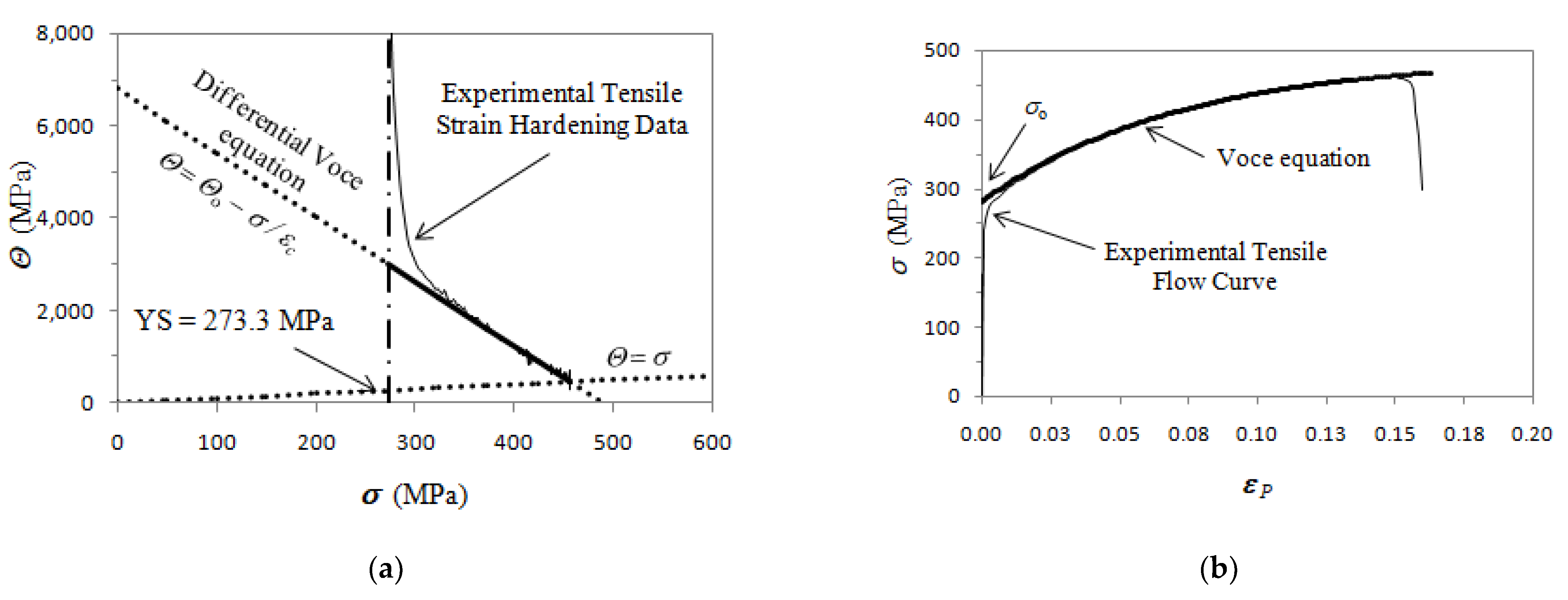
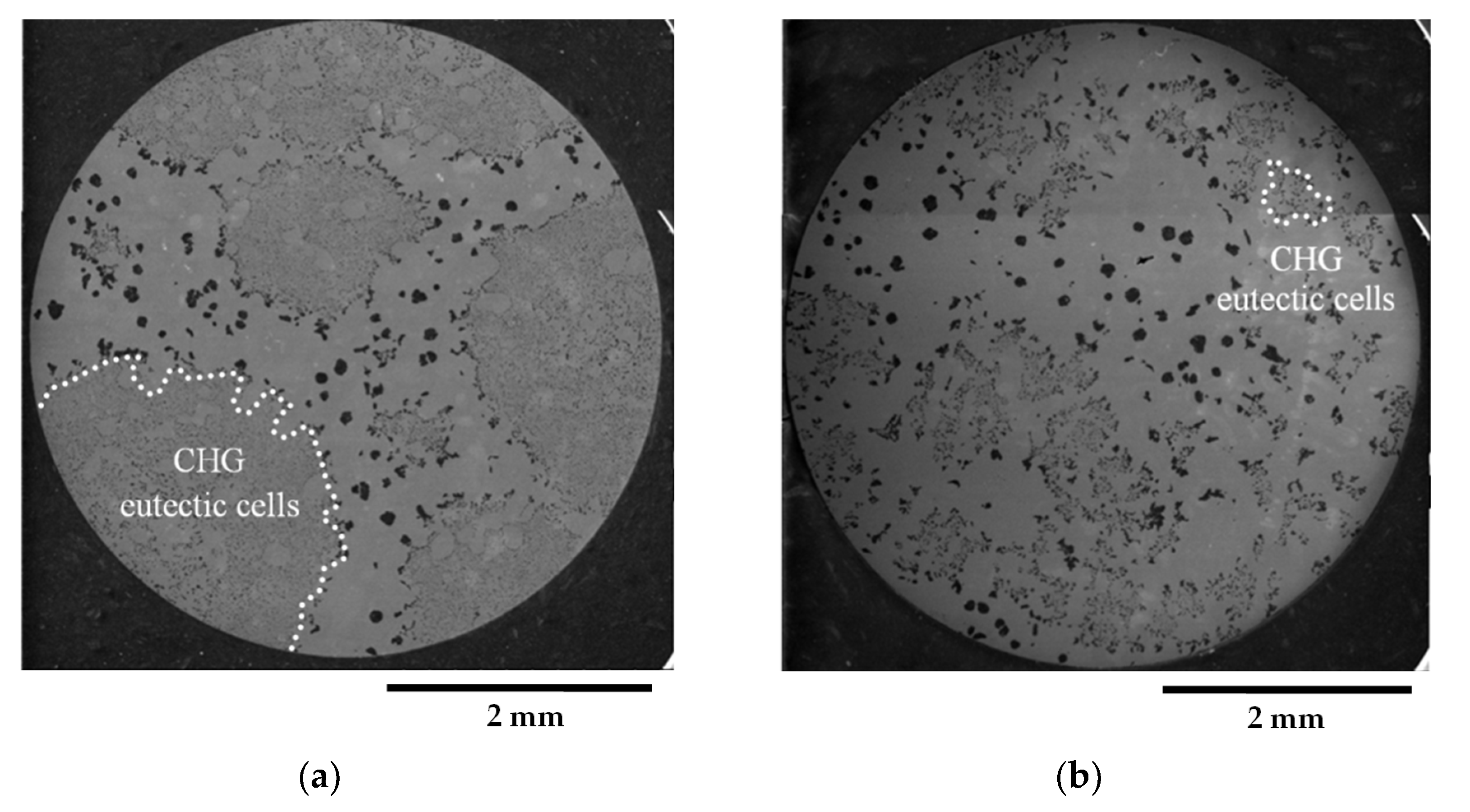

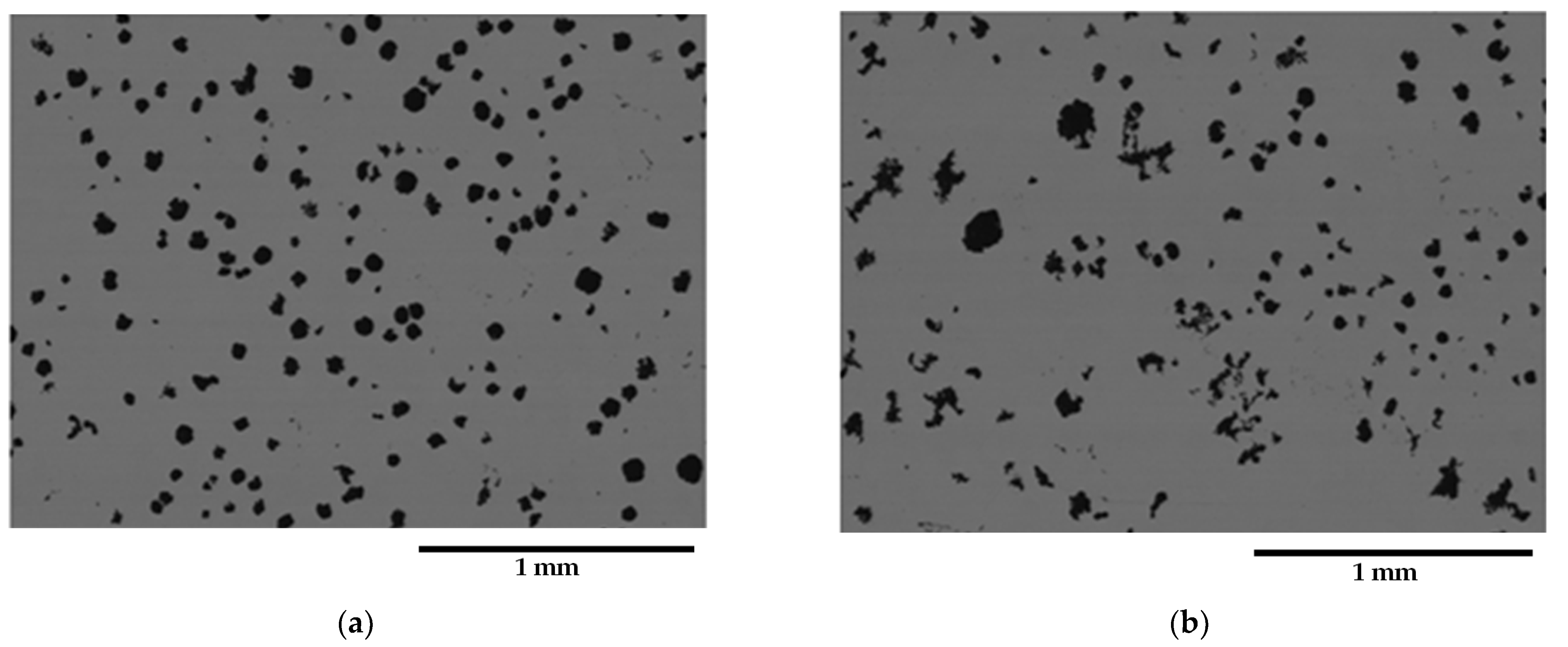
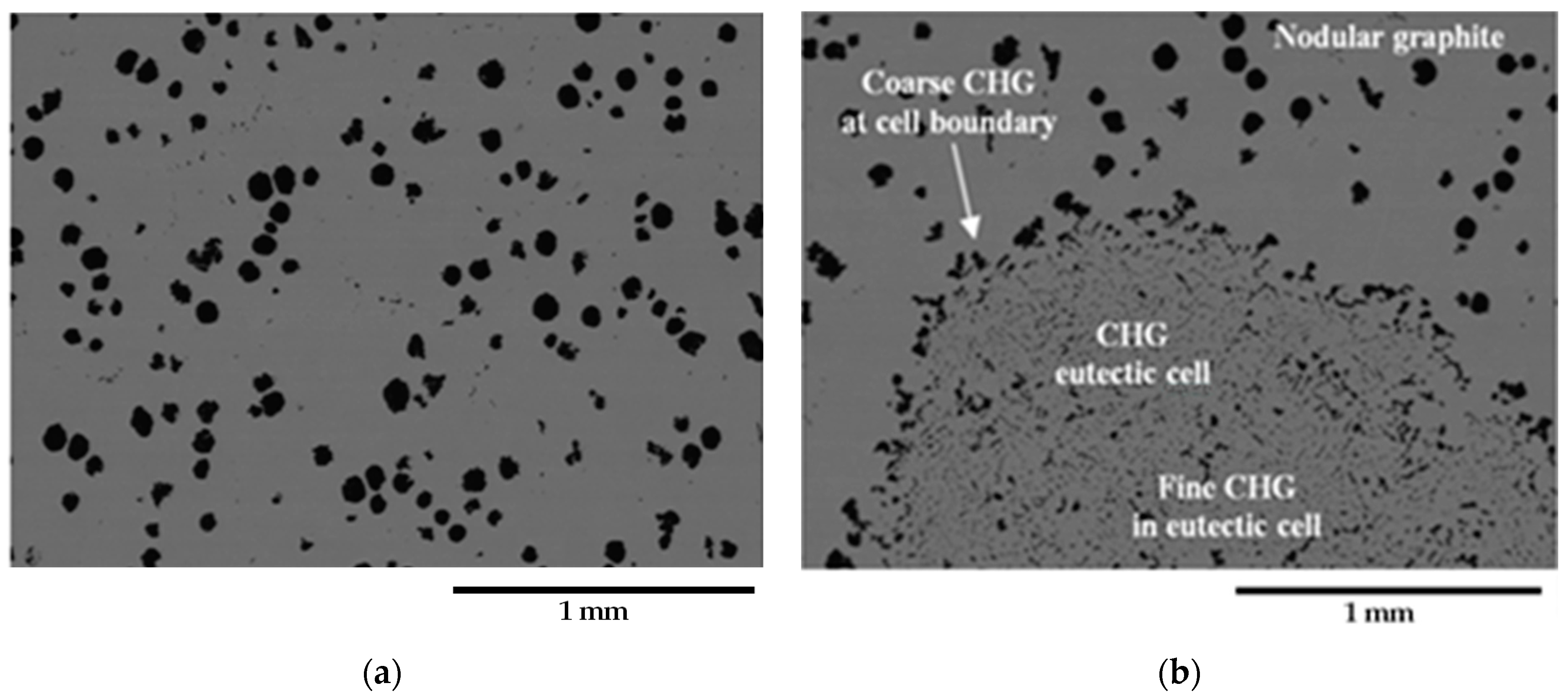

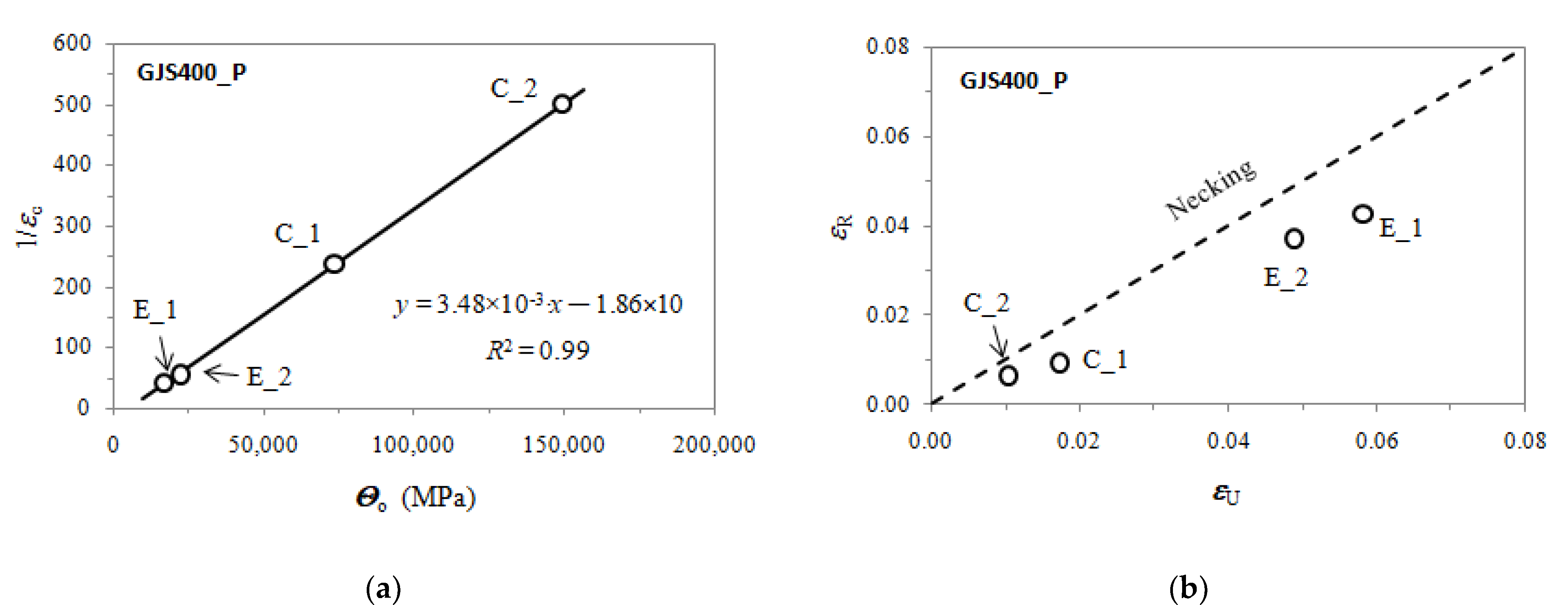

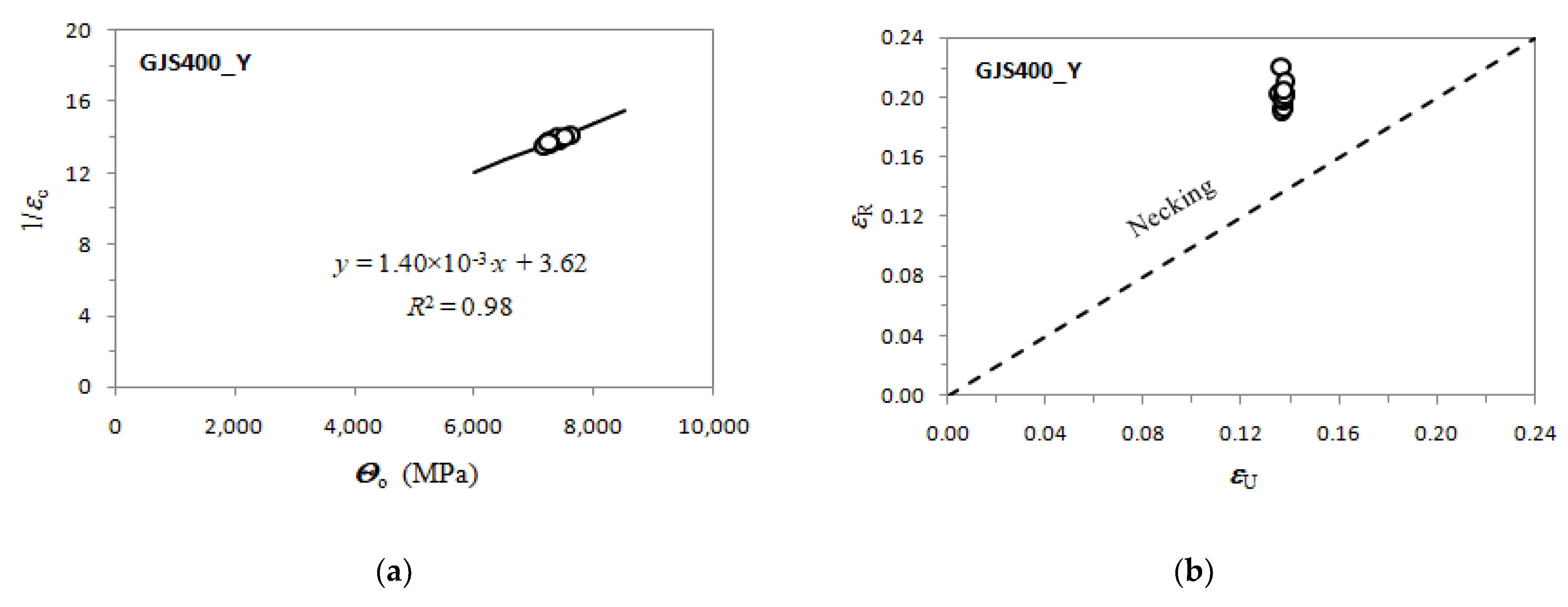
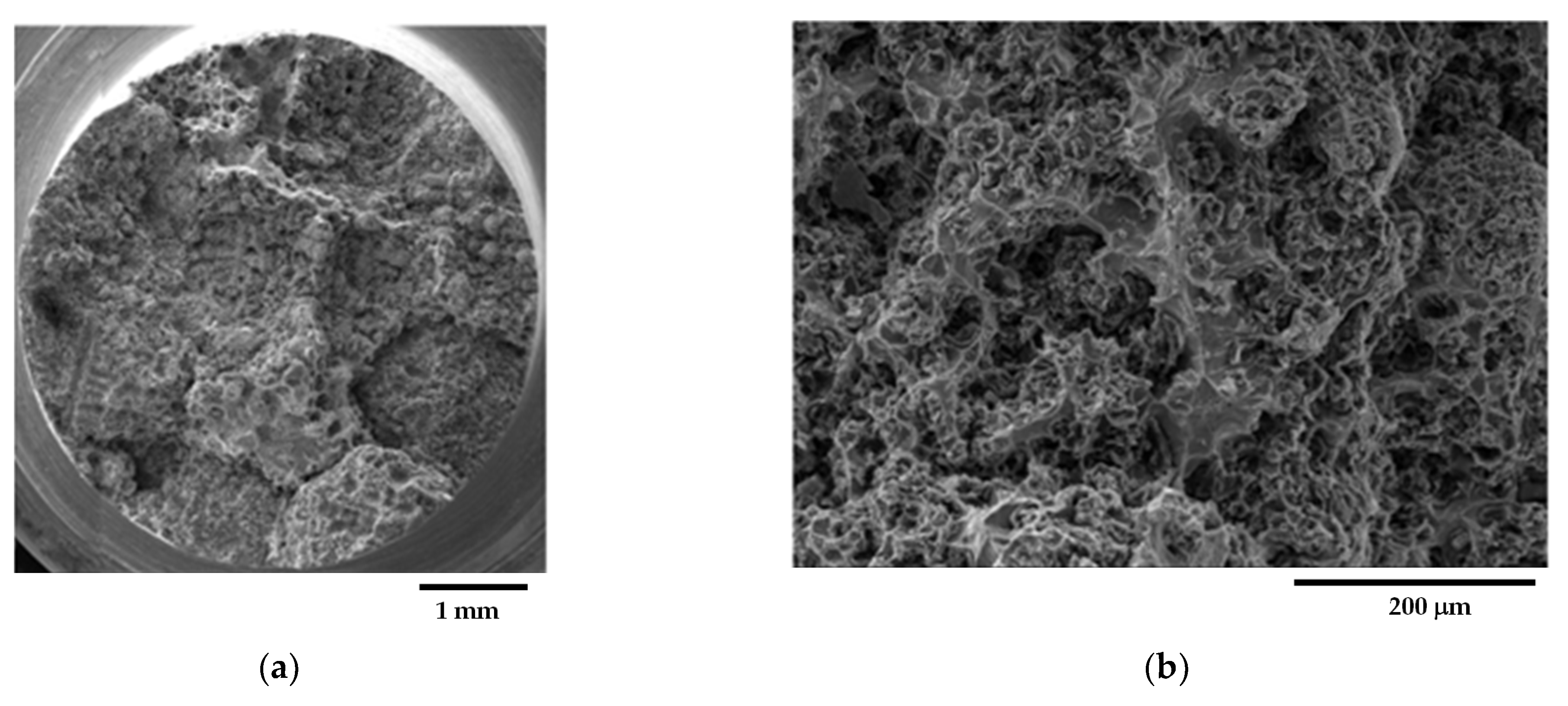


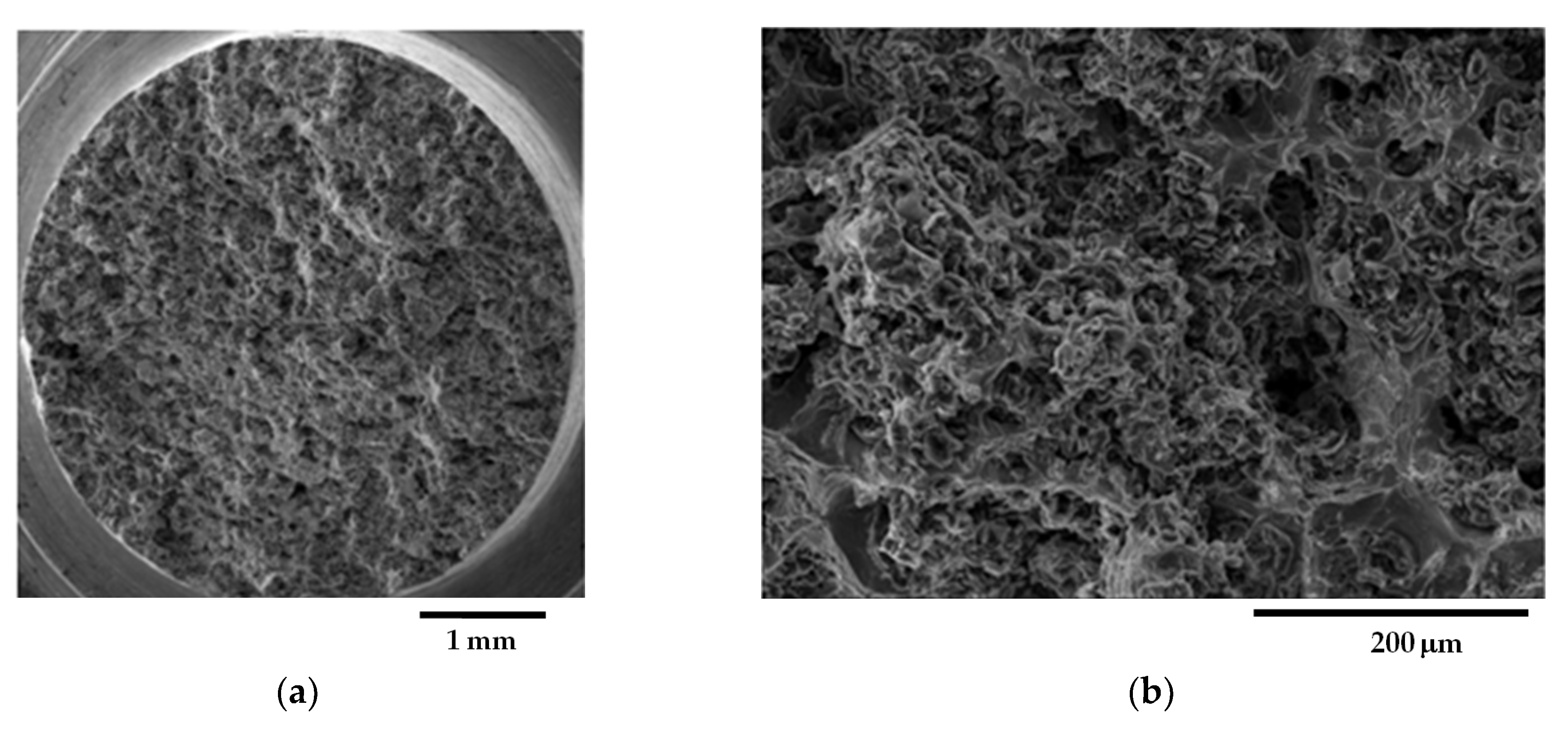
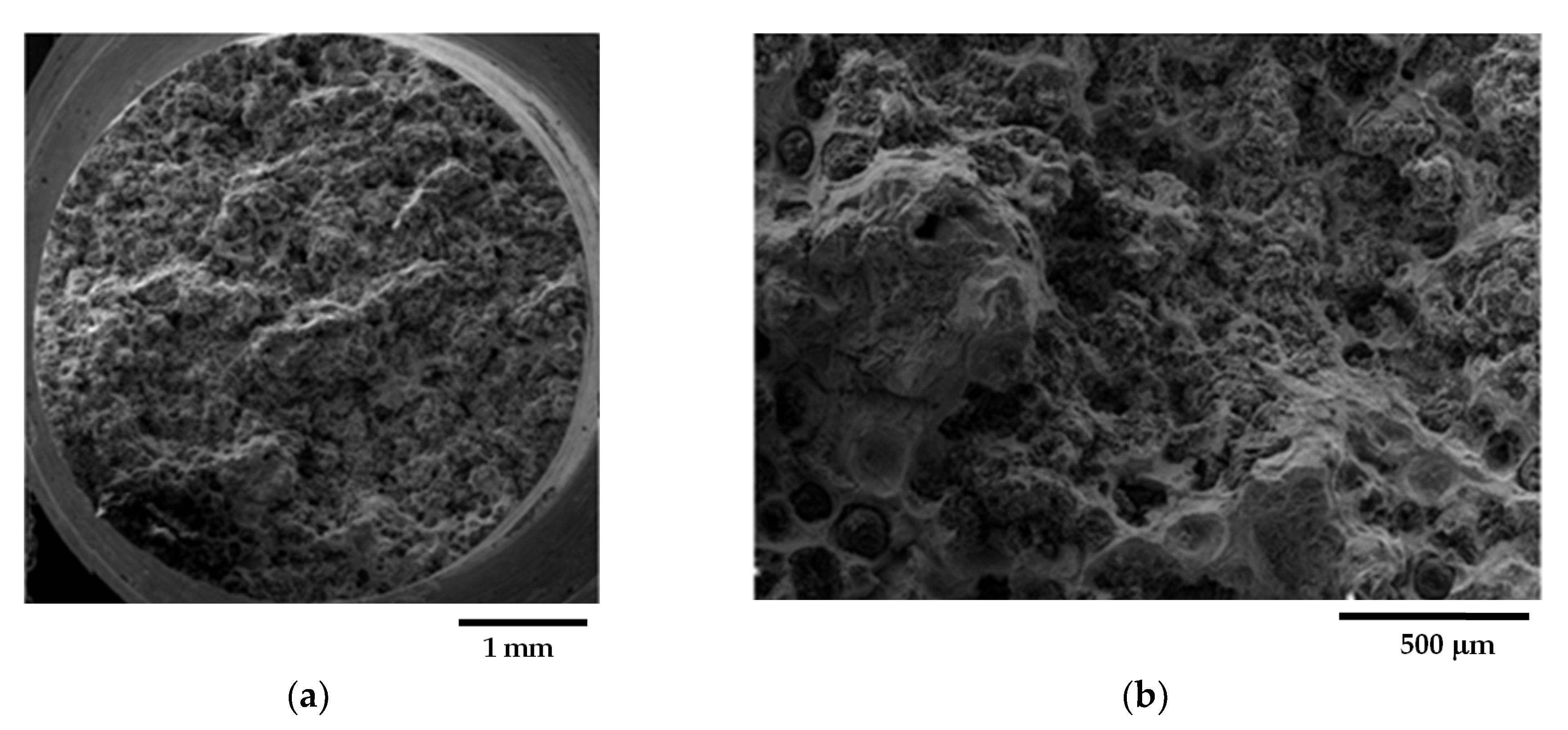
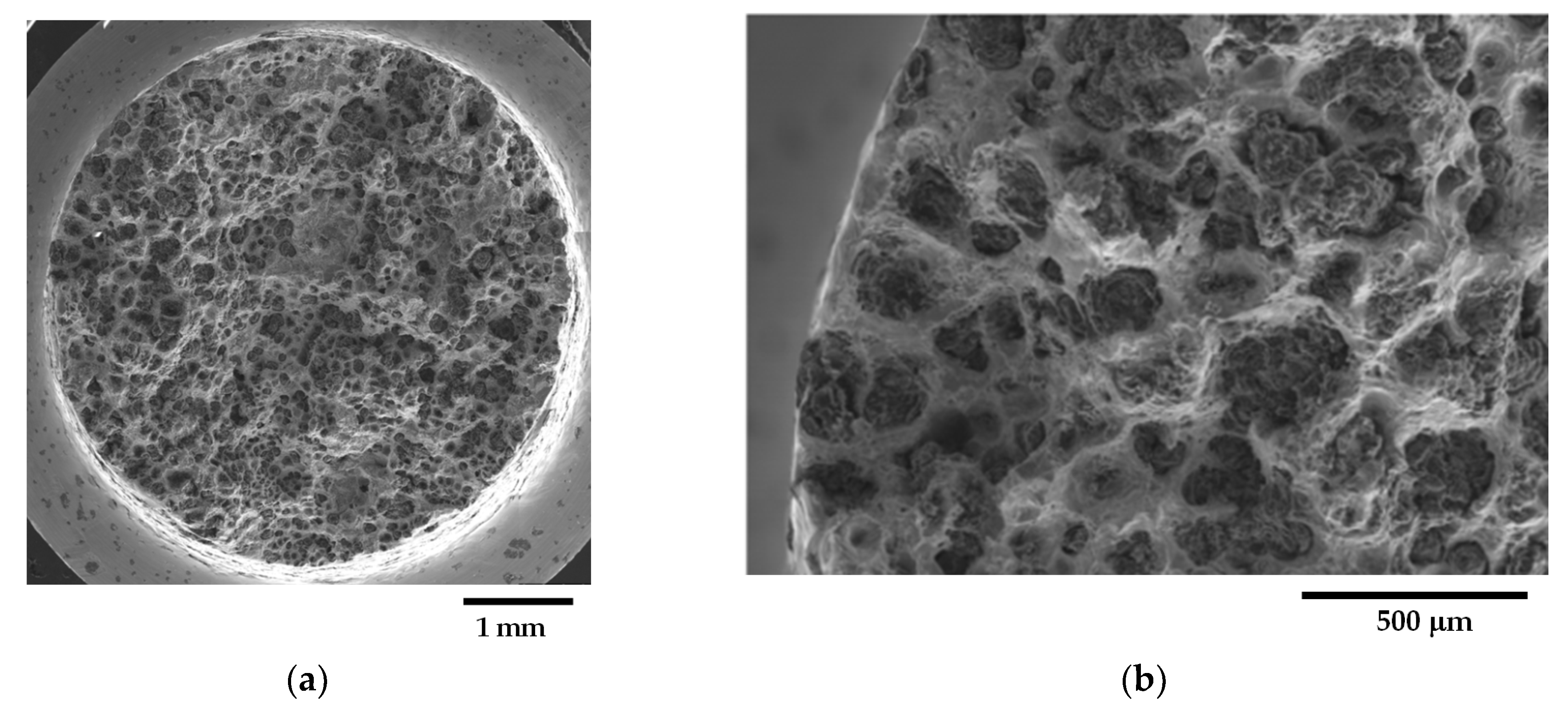


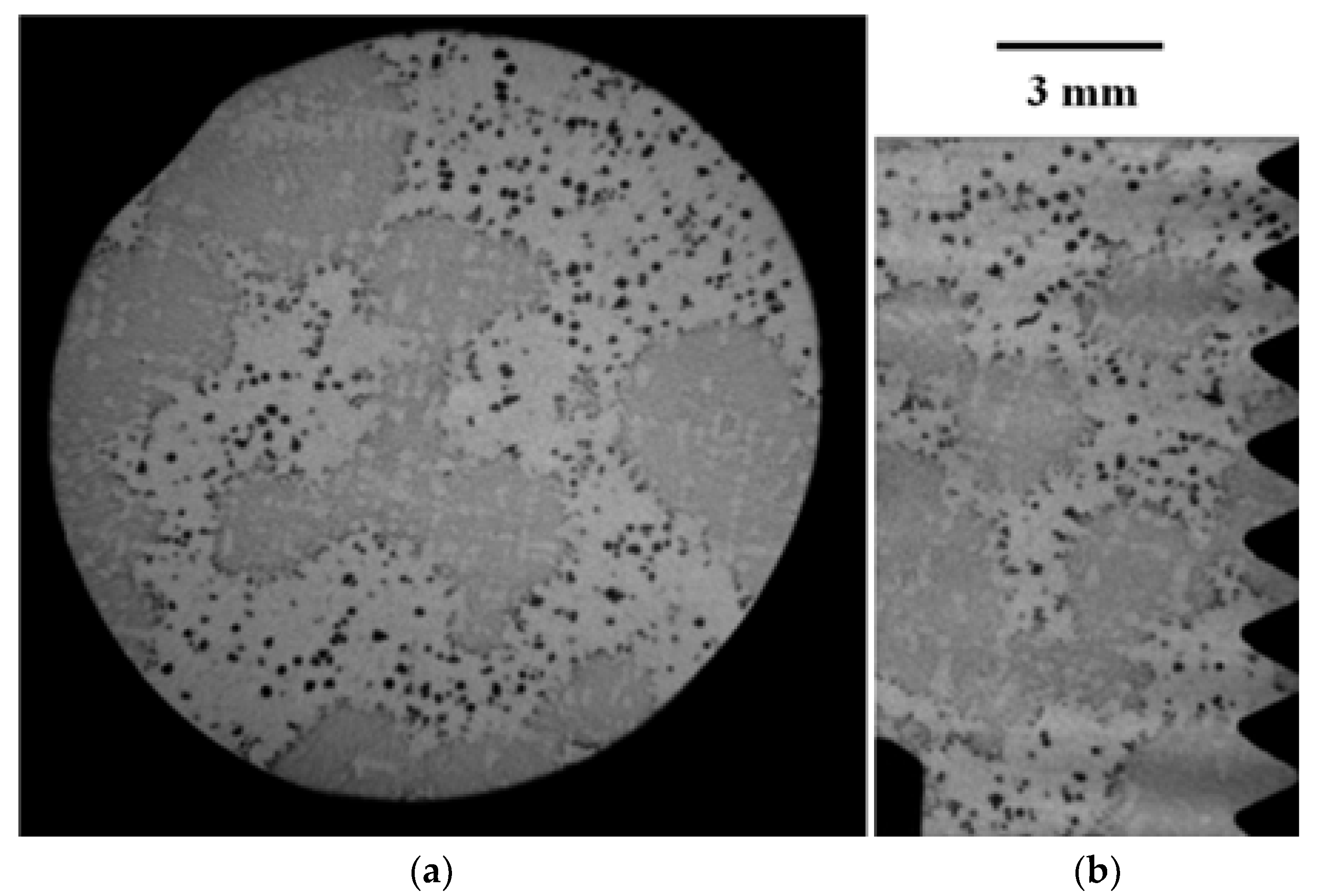
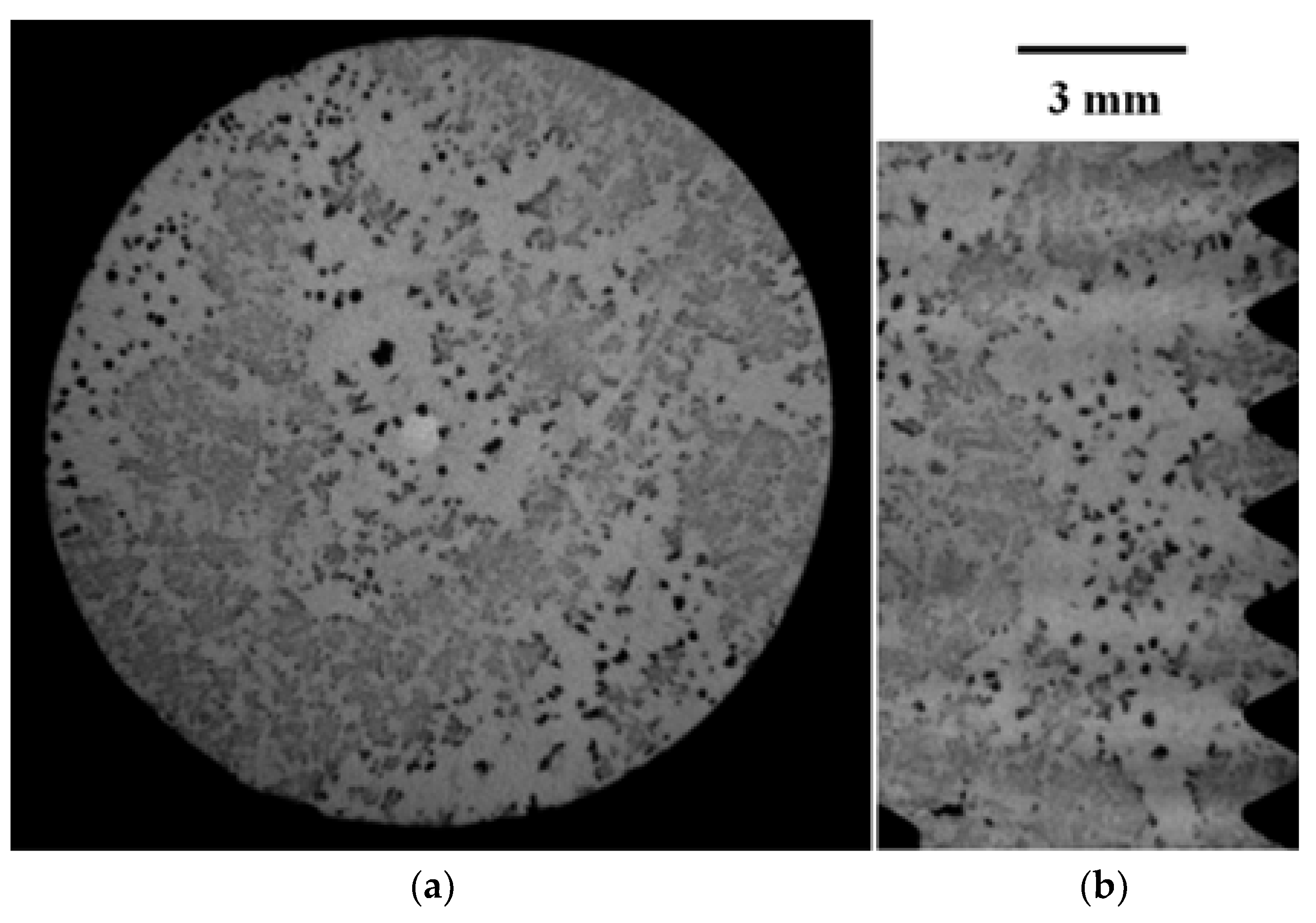
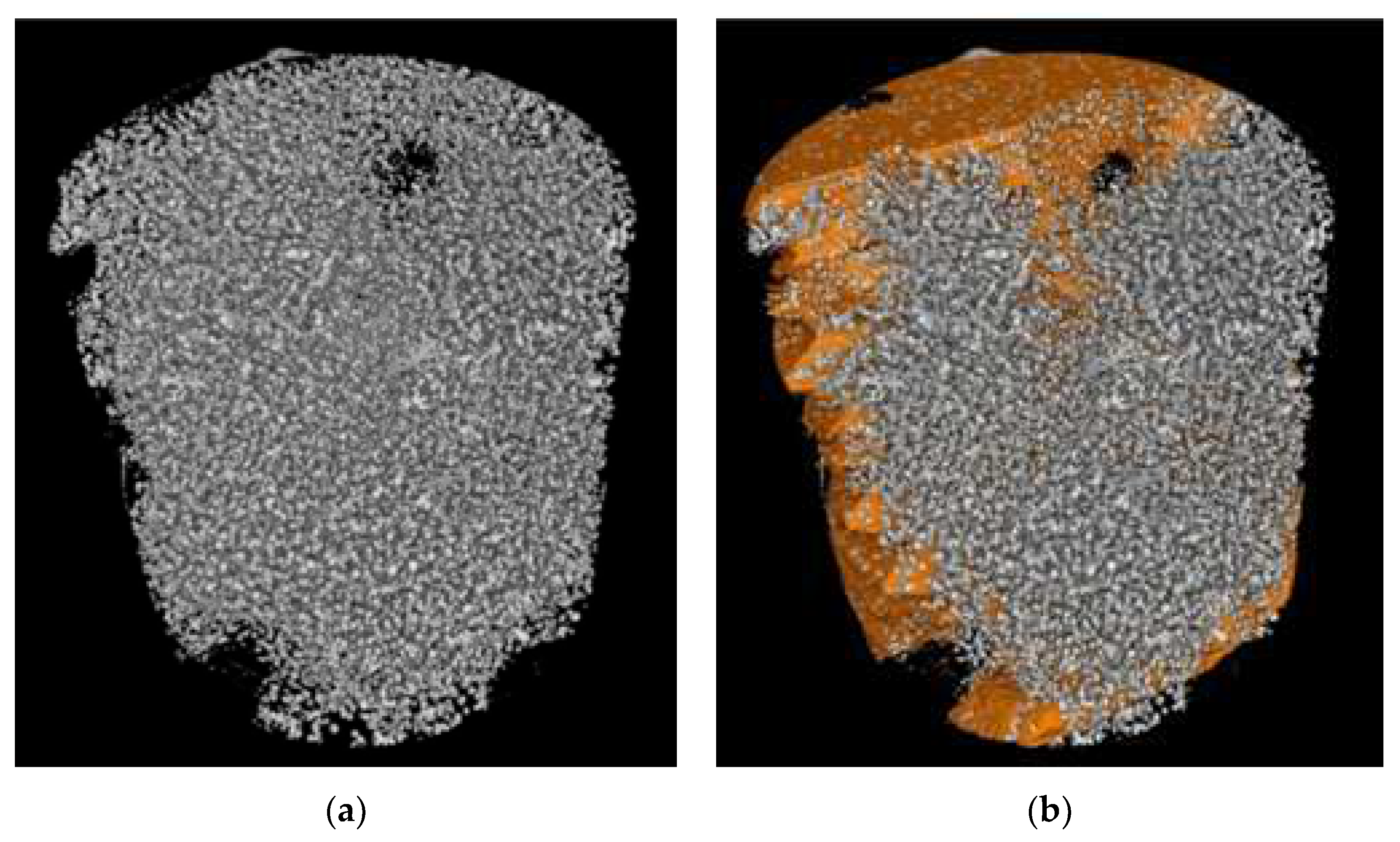
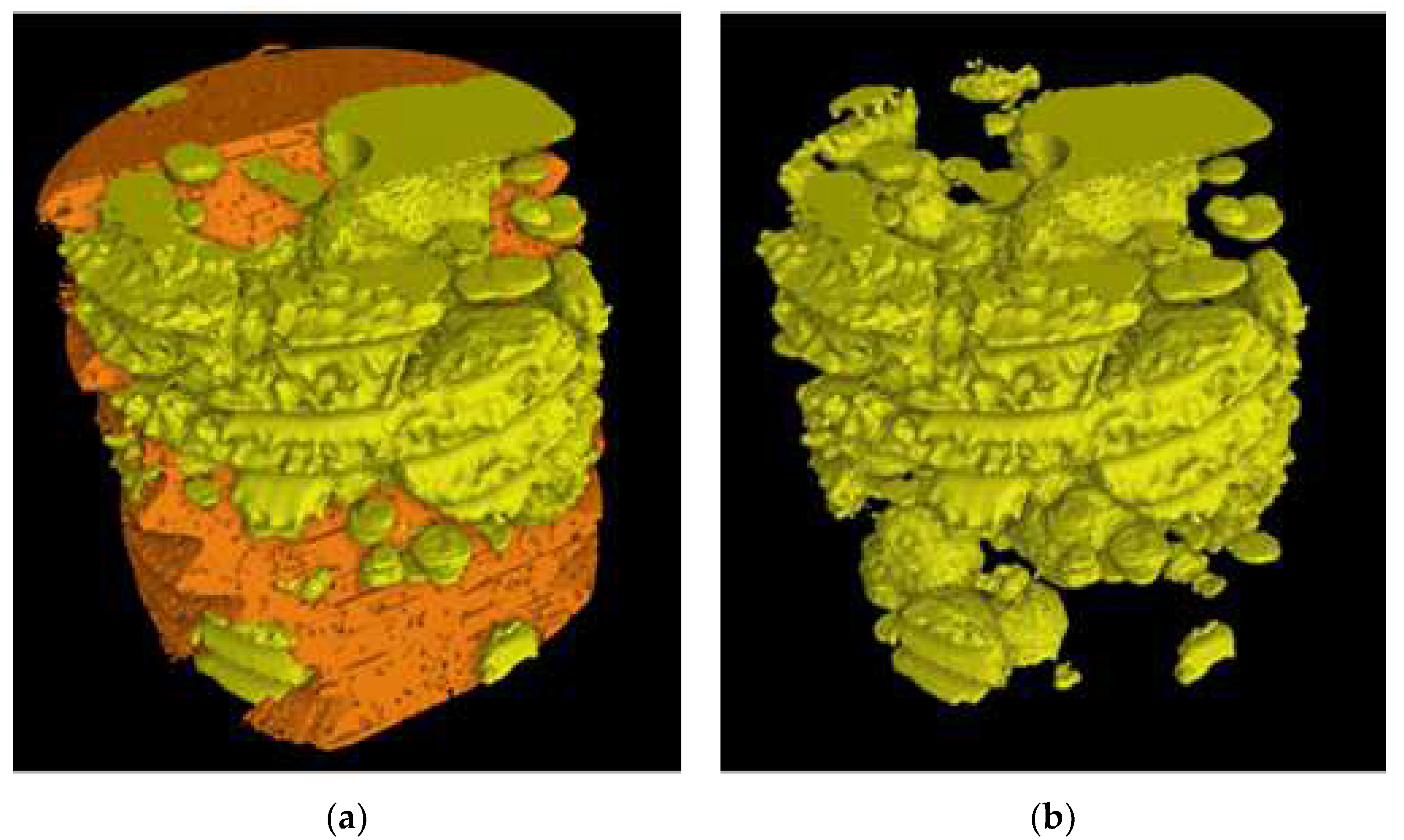
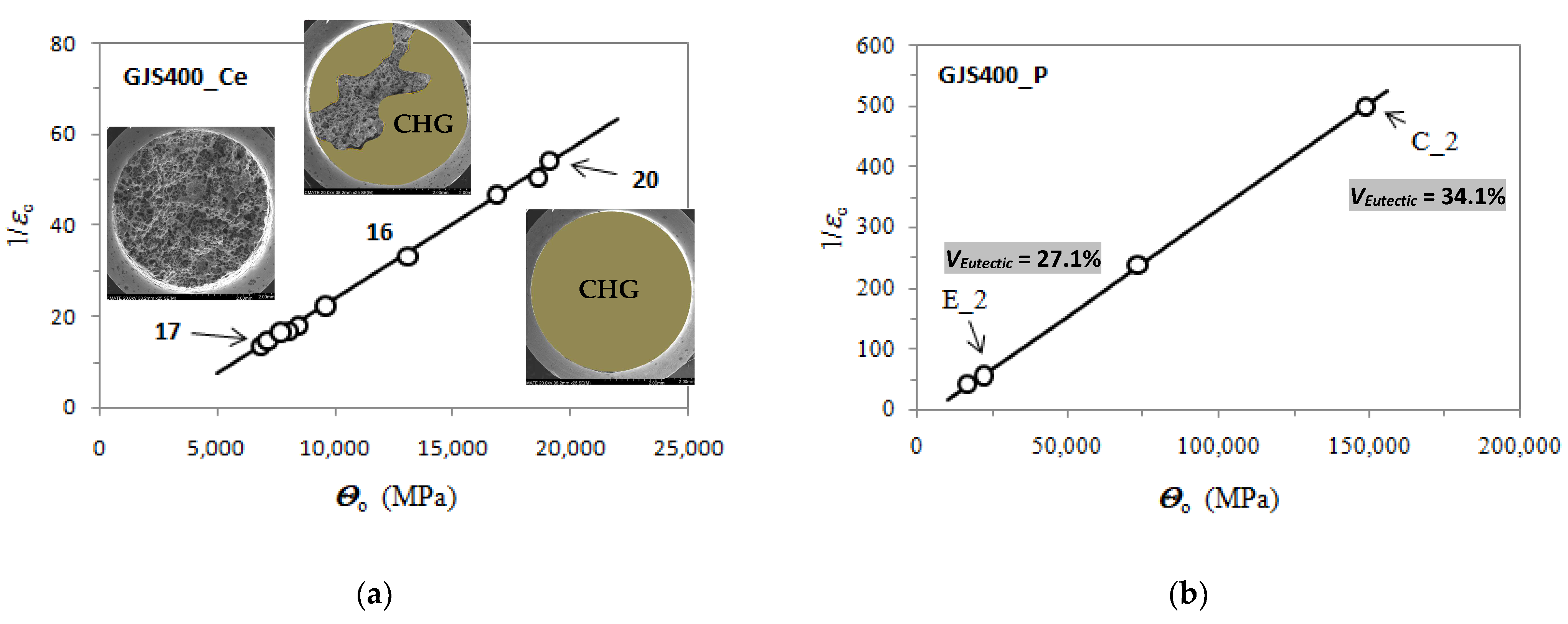

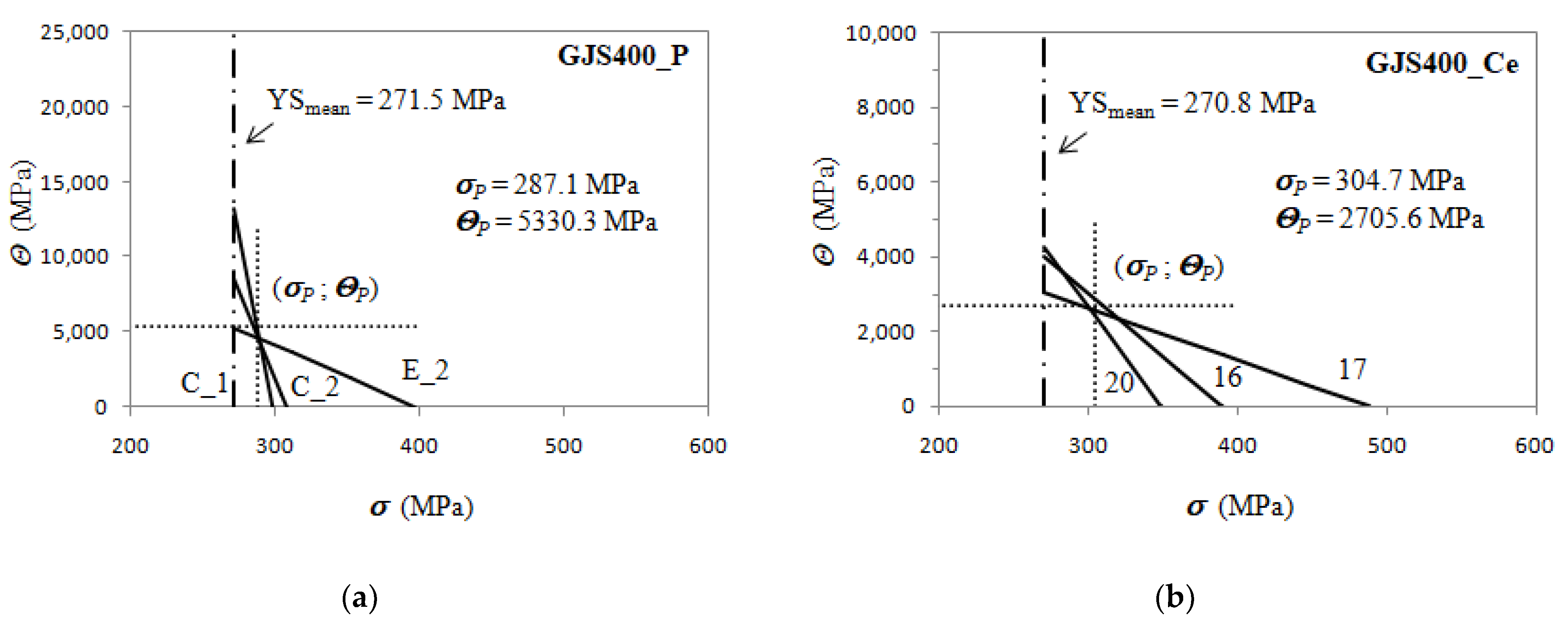
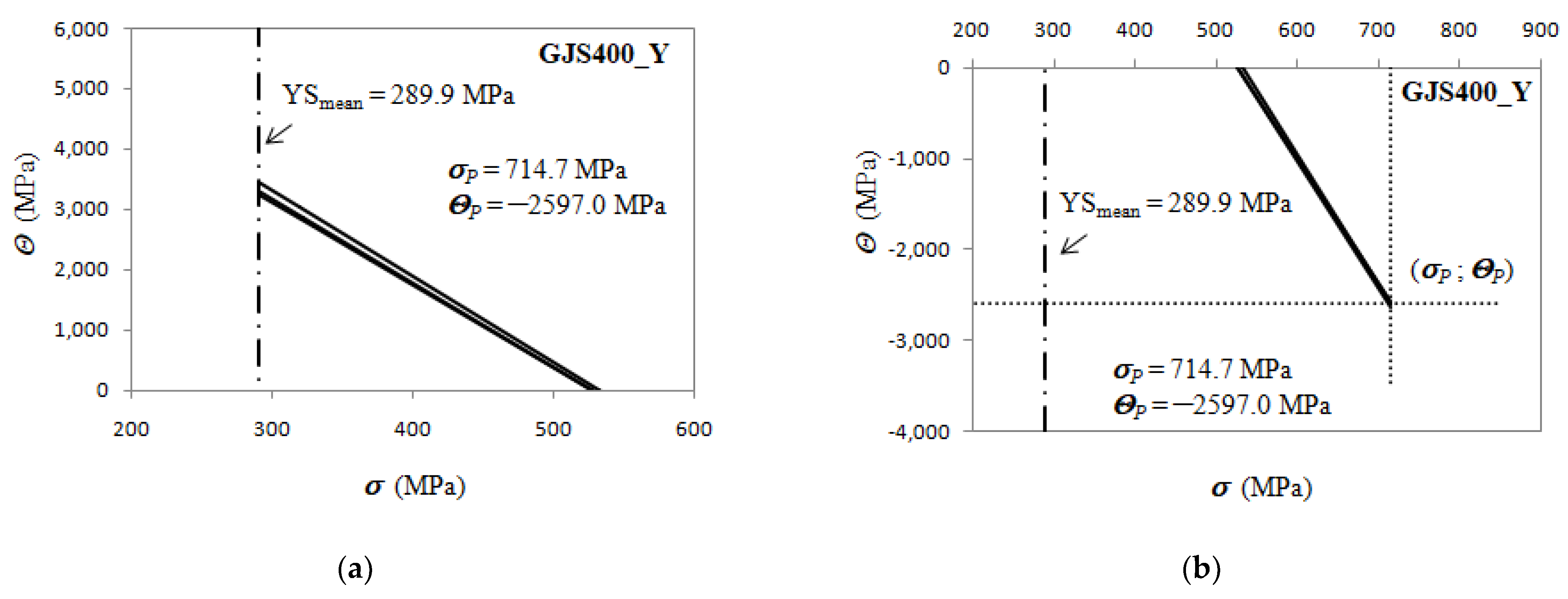
| Code | C | Si | Mn | P | S | Mg | Cr | Ce | CEq * |
|---|---|---|---|---|---|---|---|---|---|
| GJS400_P | 3.60 | 2.29 | 0.08 | 0.039 | 0.011 | 0.053 | 0.005 | - | 4.38 |
| GJS400_Ce | 3.75 | 2.32 | 0.16 | - | 0.009 | 0.046 | 0.040 | 0.006 | 4.53 |
| GJS400_Y | 3.63 | 2.45 | 0.13 | 0.038 | 0.043 | 0.046 | 0.023 | - | 4.46 |
| Casting | Tensile Specimen In-House Code | E (GPa) | YS (MPa) | UTS (MPa) | Elongation to Rupture (%) |
|---|---|---|---|---|---|
| GJS400_P | C_1 | 185.6 | 260.4 | 295.5 | 2.62 |
| C_2 | 193.5 | 261.8 | 286.8 | 2.80 | |
| E_1 | 168.8 | 282.6 | 361.5 | 6.47 | |
| E_2 | 167.1 | 281.0 | 366.0 | 4.37 | |
| GJS400_Ce | 11 | 151.4 | 269.4 | 326.3 | 2.82 |
| 12 | 169.6 | 272.5 | 376.5 | 7.80 | |
| 13 | 154.8 | 274.9 | 418.8 | 12.63 | |
| 14 | 157.6 | 270.6 | 429.3 | 12.53 | |
| 15 | 163.3 | 271.4 | 329.2 | 4.44 | |
| 16 | 174.7 | 269.1 | 341.3 | 5.95 | |
| 17 | 162.0 | 273.3 | 461.4 | 17.85 | |
| 18 | 159.6 | 269.5 | 438.1 | 14.69 | |
| 19 | 168.0 | 269.6 | 388.3 | 5.42 | |
| 20 | 162.7 | 267.4 | 321.9 | 2.53 |
| Sample In-House Code | C_2 | E_2 |
|---|---|---|
| Graphitic agglomerates volume fraction in ferrite (%) | 6.3 | 6.1 |
| VFerrite (ferrite + graphitic agglomerates) (%) | 65.9 | 72.9 |
| VEutectic (eutectic cells with CHG) (%) | 34.1 | 27.1 |
| Largest eutectic cell diameter (mm) | 1.37 | 0.30 |
| Standard deviation of the largest eutectic cell diameter (mm) | 0.69 | 0.12 |
| Largest ferritic volume diameter (mm) | 1.37 | 1.04 |
| Standard deviation of the largest ferritic volume diameter (mm) | 0.69 | 0.57 |
| Largest graphitic agglomerate diameter in VFerrite (mm) | 0.080 | 0.058 |
| Standard deviation of the largest graphitic agglomerate diameter in VFerrite (mm) | 0.025 | 0.024 |
| Casting | Tensile Specimen In-House Code | Θo (MPa) | 1/εc | σV (MPa) | σo (Mpa) | εCrit | εUnif |
|---|---|---|---|---|---|---|---|
| GJS400_P | C_1 | 73,282.1 | 238.2 | 307.6 | 231.5 | 0.009 | 0.017 |
| C_2 | 148,939.4 | 499.8 | 298.0 | 201.1 | 0.006 | 0.010 | |
| E_1 | 16,841.8 | 42.5 | 396.3 | 288.1 | 0.043 | 0.058 | |
| E_2 | 22,435.2 | 56.2 | 399.2 | 291.3 | 0.037 | 0.049 | |
| GJS400_Ce | 11 | 16,818.1 | 47.1 | 356.8 | 267.5 | 0.024 | 0.053 |
| 12 | 9619.9 | 22.2 | 434.8 | 274.8 | 0.046 | 0.097 | |
| 13 | 8366.0 | 18.3 | 456.1 | 274.9 | 0.090 | 0.111 | |
| 14 | 7980.3 | 17.1 | 465.3 | 273.6 | 0.099 | 0.117 | |
| 15 | 18,563.8 | 50.8 | 365.2 | 267.4 | 0.020 | 0.052 | |
| 16 | 13,097.1 | 33.6 | 389.6 | 266.9 | 0.029 | 0.071 | |
| 17 | 6790.2 | 13.9 | 488.6 | 281.4 | 0.146 | 0.133 | |
| 18 | 7156.1 | 15.0 | 478.3 | 274.6 | 0.108 | 0.128 | |
| 19 | 7710.4 | 16.5 | 467.7 | 272.5 | 0.054 | 0.121 | |
| 20 | 19,017.7 | 54.4 | 349.4 | 265.2 | 0.021 | 0.048 |
Disclaimer/Publisher’s Note: The statements, opinions and data contained in all publications are solely those of the individual author(s) and contributor(s) and not of MDPI and/or the editor(s). MDPI and/or the editor(s) disclaim responsibility for any injury to people or property resulting from any ideas, methods, instructions or products referred to in the content. |
© 2023 by the authors. Licensee MDPI, Basel, Switzerland. This article is an open access article distributed under the terms and conditions of the Creative Commons Attribution (CC BY) license (https://creativecommons.org/licenses/by/4.0/).
Share and Cite
Angella, G.; Taloni, M.; Górny, M.; Tarasiuk, J.; Wronski, S.; Montanari, R.; Pedranz, M.; Benedetti, M.; Fontanari, V.; Lusuardi, D. An Insight into the Defects-Driven Plasticity in Ductile Cast Irons. Materials 2023, 16, 3748. https://doi.org/10.3390/ma16103748
Angella G, Taloni M, Górny M, Tarasiuk J, Wronski S, Montanari R, Pedranz M, Benedetti M, Fontanari V, Lusuardi D. An Insight into the Defects-Driven Plasticity in Ductile Cast Irons. Materials. 2023; 16(10):3748. https://doi.org/10.3390/ma16103748
Chicago/Turabian StyleAngella, Giuliano, Marcello Taloni, Marcin Górny, Jacek Tarasiuk, Sebastian Wronski, Roberto Montanari, Matteo Pedranz, Matteo Benedetti, Vigilio Fontanari, and Danilo Lusuardi. 2023. "An Insight into the Defects-Driven Plasticity in Ductile Cast Irons" Materials 16, no. 10: 3748. https://doi.org/10.3390/ma16103748






